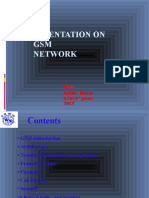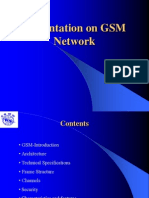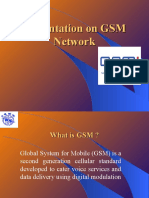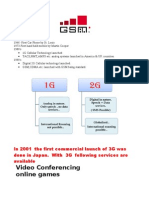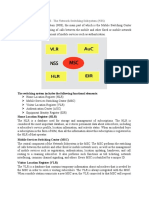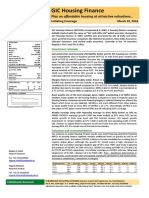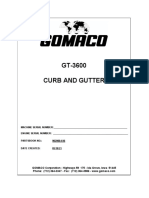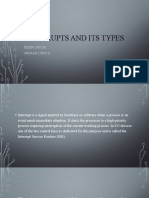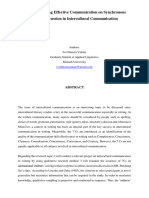0% found this document useful (0 votes)
52 views14 pagesGlobal System For Mobile Communications (GSM) : Presented by
GSM is a second generation cellular standard developed in 1991 to provide digital voice and data services. It was widely adopted due to advantages over analog systems from using digital technology. GSM systems include components like the mobile station, base station, mobile switching center, home location register and visitor location register. GSM provides services like voice calls, SMS, and supports international roaming between networks through standards-based interoperability. It employs encryption and temporary identities to enhance security of communication over air interfaces.
Uploaded by
Soumen ChowdhuryCopyright
© Attribution Non-Commercial (BY-NC)
We take content rights seriously. If you suspect this is your content, claim it here.
Available Formats
Download as PPTX, PDF, TXT or read online on Scribd
0% found this document useful (0 votes)
52 views14 pagesGlobal System For Mobile Communications (GSM) : Presented by
GSM is a second generation cellular standard developed in 1991 to provide digital voice and data services. It was widely adopted due to advantages over analog systems from using digital technology. GSM systems include components like the mobile station, base station, mobile switching center, home location register and visitor location register. GSM provides services like voice calls, SMS, and supports international roaming between networks through standards-based interoperability. It employs encryption and temporary identities to enhance security of communication over air interfaces.
Uploaded by
Soumen ChowdhuryCopyright
© Attribution Non-Commercial (BY-NC)
We take content rights seriously. If you suspect this is your content, claim it here.
Available Formats
Download as PPTX, PDF, TXT or read online on Scribd
/ 14

